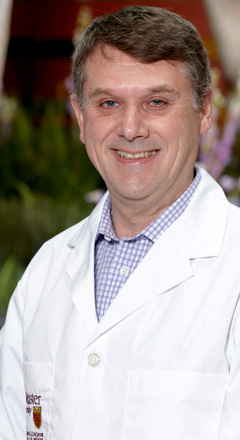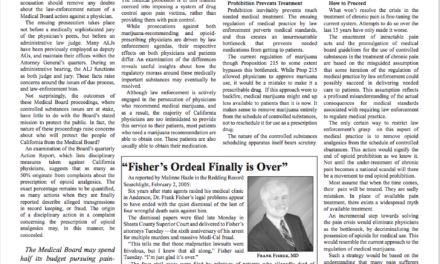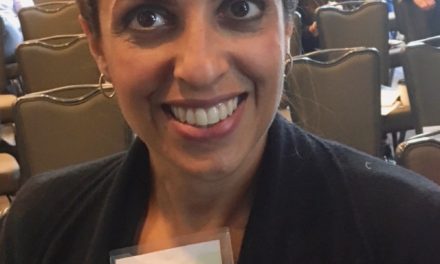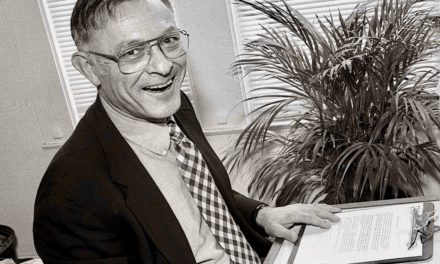Jeff Hergenrather, MD, forwards this excellent, thorough article by Felicity Nelson on medicalrepublic.com, examining the logic of using N=1 trials to evaluate cannabis use. Nelson’s hook was a recent meeting ( GP17) of The Royal Australian College of General Practitioners (RACGP), at which SCC stalwart David Caldicott, MD, advocated the N=1 approach. Tell it like it is, Felicity:
A GP took to the microphone at last month’s GP17 panel discussion on medical cannabis and said: “We’ve got a full house, and I’m sure most of us here are wondering, what do we do?”
The room was crammed full of curious doctors; GPs stood at the back for lack of chairs.
The session featured a hearty academic debate on the evidence for and against the use of medical cannabis. Representatives from the TGA, academia, medical research, and the RACGP offered up a variety of contradicting viewpoints, but very little in the way of practical advice.The mood in the room, captured by the GP’s pointed question, was that this wasn’t good enough. It is very easy to sit on the fence when you’re a regulator, a researcher or the RACGP, but GPs actually have to do something.
Medical cannabis has been legal in this country for over a year. Several cannabinoid oil imports have already landed on Australian soil. Growers are securing their licenses and beginning operations. Patients are clamouring for advice. But GPs are stuck between a rock and a hard place when it comes to prescribing.
While researchers and regulators advise extreme caution, medical cannabis advocates are calling on GPs to have some courage, put their patients first, and give cannabis a go.
After all, advocates argue, cannabis is less dangerous and less addictive than many mainstream medications, including opioids.We were laggards in this space in Australia, Dr David Caldicott, an emergency physician with a special interest in medical cannabis, said at GP17.
Medical cannabis is being safely used by patients worldwide, with more than 200,000 approved patients in Canada, and more than 30,000 in Israel. There are no recorded deaths.
A landmark report issued this year by the National Academies of Sciences, Engineering, and Medicine in the US found that the evidence to support the use of medical cannabis is mounting in the literature.
But the kind of evidence that GPs are accustomed to –namely population-level, randomised, double blind, placebo-controlled clinical trials– is lacking.
“Let’s be honest, GPs are putting their reputation and name on the line,” says Justin Sinclair, a pharmacognosist (a person who studies medicines derived from plants) who is affiliated with advocacy group United in Compassion. “And that’s certainly a contributing factor as to why the SAS Category B has had such a low uptake.”
GPs simply do not have the time to navigate through the clunky Rube Goldberg machine that is Australia’s medical cannabis regulation.
Currently, GPs have to apply for approval from the TGA to prescribe medical cannabis for each patient individually, usually in collaboration with a specialist.
These applications are frequently stalled both at a federal and state level on the basis that there is not enough RCT evidence provided to support the application, says Teresa Nicoletti, a partner at law firm Mills Oakley.
Out of 220 SAS Category B applications made to the TGA in the past year, only about half have been approved, and 75 are awaiting further information from the doctor. The TGA has only received about four applications under SAS Category A for terminally ill patients.
The “stupidity of the current system” has made GPs the “agents of disappointment”, says Professor Iain McGregor, a researcher with The Lambert Initiative at the University of Sydney.There has to be a more pragmatic approach – and medical cannabis advocates believe n=1 trials could be the answer.
Using this model, GPs would essentially make each individual patient their own clinical trial.
Instead of drawing on patchy RCT evidence, the doctor would make the case for trialling medical cannabis in a particular patient who had tried all other therapies, or who had some success with illicit cannabis.
Data would be collected throughout the n=1 trial to determine whether the treatment was associated with clinically significant improvements or caused any side effects.
“If the treatment works, great, they continue to use it,” says Ms Nicoletti. “If it doesn’t, then obviously they come off the treatment.”
The benefit of n=1 is that everyone gets access to the treatment and data is collected in an expeditious and cost-effective manner, says Mr Sinclair.
Running full-blown RCTs for medical cannabis will cost tens of millions of dollars and take over a decade to produce results, says Professor McGregor.
“We need to gather evidence quickly and in a very enlightened and nimble sort of way. N=1 trials are one of the few ways that we can do that.”
The use of n=1 trials is appropriate for medical cannabis for several reasons, advocates argue.
Firstly, the therapeutic effect of medical cannabis varies greatly between patients, which means that RCTs may not reflect the true value of the medicine for some patients.
The quality of life improvements can be extreme, if you believe the anecdotes. For example, a child with severe epilepsy called Suli Peek, who was featured on the ABC’s Lateline current affairs program earlier this year, allegedly saw a 90% to 95% decrease in seizures with the use of illicit cannabis.Secondly, the TGA approves each medical cannabis application on a case-by-case basis, meaning that population-level evidence may not be as relevant as the clinical history of the individual patient.
There is also a compassionate (or a harm-minimisation) argument.
Tens of thousands of Australian patients are already self-medicating with illicit cannabis, says Mr Sinclair. These patients are often vulnerable or in chronic pain. Sometimes they have no other therapeutic options.
Surely it is better, he argues, to provide these patients with a quality-assured cannabis product under medical supervision whilst collecting scientific data than to have patients resorting to the black market?
We can hear what you’re thinking. Isn’t n=1 evidence laughably weak?
Single-patient trials are often disparaged as “only anecdotal”. When such results are published as case studies they sit on the lowest rung on the hierarchy of evidence.
Unlike an RCT or a systematic review, an n=1 study reveals nothing about the average effect of a medication across a population because it has a sample size of one, says Dr Katherine Lee, a senior biostatistician at Murdoch Children’s Research Institute.But let’s not throw the baby out with the bathwater just yet. Importantly, an n=1 study can be very useful for guiding clinical management for an individual, says Dr Lee.
And multiple n=1 trials can be aggregated to form a very convincing body of evidence that rivals, and in some cases surpasses, that produced by an RCT.In a formal, double-blinded n=1 trial, a single patient takes a treatment and a placebo sequentially in a random order. Clinically relevant outcomes (such as pain levels or numbers of seizures) are recorded for the trial duration.
“The fact is that it is a perfectly matched control because the same person is providing data on both sides of the equation,” says Professor Geoffrey Mitchell, a professor of general practice at The University of Queensland.
“It’s a very strong research methodology. Once people grasp the concept, they see the value of it.”
Professor Mitchell ran the first n=1 studies in Australia around 20 years ago and has since conducted more than 600. During his career, he has used n=1 trials to compare: stimulants against placebo for children with ADHD; NSAIDs against paracetamol for patients with chronic arthritis; and valerian against temazepam for patients with sleep problems.
His team is currently running n=1 trials looking at melatonin for patients who have difficulties sleeping, including children with ADHD and patients with Parkinson’s disease.
N=1 trials are particularly valuable when there are not enough patients to perform an RCT, such as in palliative care settings, says Professor Mitchell. “It means that you can get an RCT-equivalent result with maybe a half or maybe a third of the patients that you would need in a full-on RCT.”While formal n=1 trials can be difficult and expensive to set up – with upfront costs of around $70,000 to complete the ethics approval process, establish a protocol, recruit participants, and repackage the placebo so that it is indistinguishable from the active treatment – they can still be very cost-effective, particularly for expensive treatments.
And an informal version of an n=1 trial, called a Single Patient Open Trial (SPOT), retains much of the clinical value, while removing some of the bother and expense of a formal trial.SPOTs are not double blinded and have no placebo. A patient simply takes a medication for a period of time and then swaps to a different medication, or to no medication, and then repeats this several times.
SPOTs are superior to casual therapeutic trials because the patient and doctor agree in advance on which set of symptoms will be monitored.
Instead of the patient reporting a vague feeling of improvement after receiving treatment, which could be due to a placebo effect or symptoms regressing to the mean, the GP and the patient have pre-determined outcomes to compare against the baseline.
“The more times you get a result in favour of the active treatment, the more likely the treatment is actually going to work for that person,” says Professor Mitchell. “Three cycles give about a 90% chance that what you are seeing actually represents the truth,” he says.
Ethics approval is not required for an n=1 trial or a SPOT that guides the clinical care of a patient. If the trial is being conducted for research purposes, however, ethics approval is required.Paul Glasziou, a professor of evidence-based medicine at Bond University, first came across the concept of n=1 trials in the literature in the early 2000s and tried to spread the idea among Australian researchers and GPs.
But the idea hasn’t caught on. Drug companies generally want to prove that their medications can safely treat large numbers of people, which can only be done through RCTs, says Professor Glasziou. Regulators also prefer simple, straightforward data about the average effect of a standard dose across a population to more fine-tuned n=1 studies, he says.
The n=1 approach is generally perceived as a research tool by clinicians, rather than something that can be used in everyday practice, says Professor Glasziou.
But entering the medical cannabis debate might be “a nice opportunity to prove the value of n=1 s”, he says.
For these trials to be effective, however, a number of conditions need to be satisfied:
• The drug must have a relatively immediate and short acting effect
• The drug must be standardised
• The amount of time it takes for the drug to leave the body, the “washout” period, must be known, and preferably short
• The drug should, obviously, have a reasonable safety profile
• It must be possible to create a placebo
• The patient’s condition needs to be ongoing and relatively stable
• The effect of the drug should vary between patients
If the above conditions are met, it would be feasible (with the appropriate funding) to run n=1 trials for medical cannabis in general practice, and aggregate the data, according to Professor Mitchell.
Medical cannabis has a relatively short-lasting effect, and is unlikely to change the general course of the condition. This makes it is a good drug candidate for n=1 trials or SPOTs, Dr Lee, the aforementioned biostatistician, says.
Professor McGregor says medical cannabis ticks most of the boxes for an n=1 trial.
The cannabis plant has more than 400 bioactive chemicals, including more than 100 cannabinoids, around 200 terpenes and flavonoids. Each strain of the plant has a different combination of these chemicals.But cannabinoid oils imported into Australia have been purified to contain high concentrations of two main cannabinoids, tetrahydrocannabinol (THC) and cannabidiol (CBD), which means that the drug is standardised to the level required to run n=1s, says Professor McGregor.
While THC is highly lipophilic (meaning it is retained in the body fat), a wash out period of one to two weeks is sufficient for the patient to produce a THC-free urine sample.
“CBD doesn’t lodge in fat as much as THC, so you could probably give a CBD-free urine within three to four days, even after quite heavy dosing,” says Professor McGregor. The safety concerns around cannabis are “a bit stupid”, he adds. “There is no other drug that is in this position, where you’ve got 100 million users, yet we are still arguing over the evidence for the safety of it.”One problem that n=1 medical cannabis trials face almost immediately is finding a suitable placebo, says Professor McGregor.
“Cannabis has a very distinctive smell and aroma, so you would have to somehow disguise the oils,” he says.
That heavy scent could be masked using a peppermint flavour, or better still, the oil could be placed in a capsule, but “that might require a little bit of thought on the part of clinicians doing n=1 trials”.
The patient may also be able to distinguish the active treatment from the placebo if the side effects are significant. However, side effects such as drowsiness are more common with high-THC oils than with high-CBD products, says Professor McGregor.
Dr John Lawson, a neurologist at Sydney Children’s Hospital, Randwick leading the paediatric medicinal cannabis trials in NSW, says aggregated n=1s may be safe for patients with chronic pain, but can be quite dangerous for patients with epilepsy.
Stopping a drug suddenly in patients with epilepsy can increase their risk of death or status epilepticus, he says. Unless a drug is causing significant side effects, doctors phase it out gradually over weeks or months. “So that would make an n=1 difficult,” says Dr Lawson.Large-scale RCTs on medical cannabis are superior to n=1 trials for two reasons, says Dr Lawson. Firstly, very rare side effects are only observed when a drug is trialled on hundreds of thousands of people. “You will never get information like that from n=1 trials,” he says.
Secondly, RCTs are a necessary antidote to the publicity around medical cannabis as a miracle cure for conditions such as childhood epilepsy, which is giving parents false hope, says Dr Lawson.
For instance, the internet keeps recycling the story of a child with Dravet Syndrome called Charlotte Figi who was successfully treated with cannabis. But an RCT showed that the majority of kids who have Charlotte Figi’s condition were not helped by medical cannabis. “That’s a very important message that you won’t get in an n=1 trial,” says Dr Lawson.
In addition, Dr Lawson suspects that most of the advocacy for the n=1 trials is really about “dishing out of the medication” rather than collecting useful data.
“From an individual point of view, doing an n=1 trial may help that child, but it rarely leads to any benefit for anyone else,” he says. “Whereas where people participate in clinical trials, that’s how science moves forward.”
The Medical Republic asked the TGA whether it had any interest in allowing GPs to run n=1 trials for medical cannabis, but did not receive a response. The RACGP declined the opportunity to comment.https://en.wikipedia.org/wiki/Gordon_Guyatt
But most of the experts we interviewed for this story – including GP academics, n=1 researchers and one biostatistician – were very interested, or at least open to, the idea.
Putting the RCT-is-best dogma to one side for a moment, and considering that the core responsibility of a GP is to work out, using evidence and reason, whether a treatment can help their patient feel better, “isn’t it unethical not to find out what is best for the patient by doing the n=1?” asks Professor Glasziou.
Relevant Background
Willie Notcutt, MD, and colleagues published a study in Anesthesia 2004, ‘Initial experiences with medicinal extracts of cannabis for chronic pain: Results from 34 ‘N of 1’ studies.“‘
An earlier version of that study was presented by Notcutt at the 2002 International Cannabinoid Research Society meeting, as described here.
In this 2009 O’Shaughnessy’s interview, Notcutt advises clinicians on the applicability of N=1 trials in assessing the effects of cannabis on individual patients.
Notcutt credits Dr. Gordon Guyatt with establishing the validity of studies based on N=1 trials. —FG





